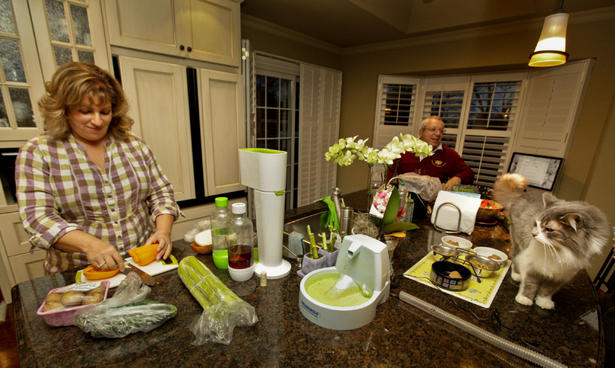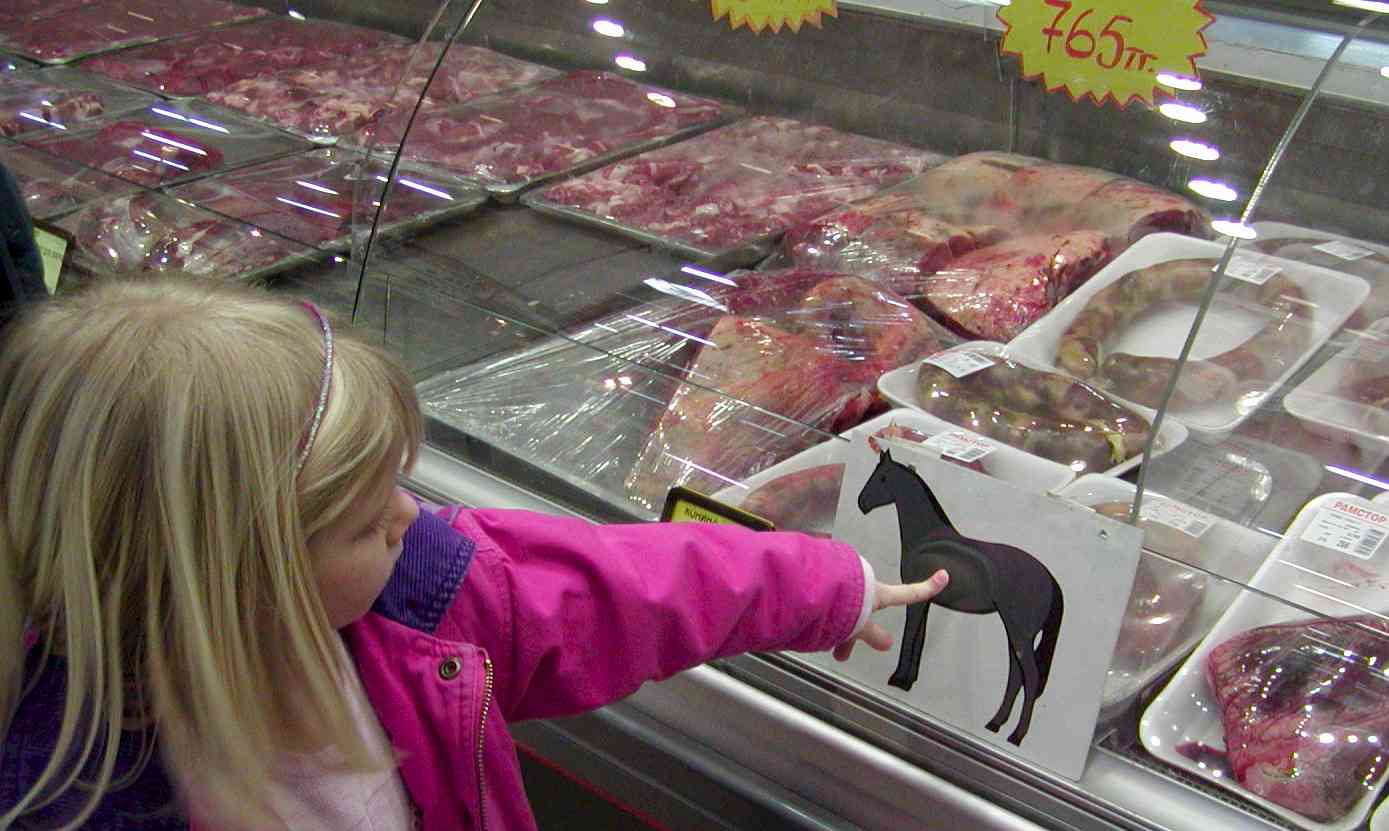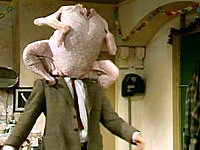Real meals in real homes, from the Toronto Star (that’s in Canada).
Featuring a real doctor; a 54-year-old anesthesiologist who works in the sterile confines of a hospital where he’s also the operating room medical director.
Dr. Kevin Shine planned to show me how an “obligate carnivore” and his diabetic vegetarian wife get along on the food front.
He may or may not have realized that the most unusual thing about mealtime in his Oakville home is how involved the family’s cats Angel, Katanya, Sasha and Sam are.
The feline foursome eats on the spacious granite island in the kitchen. Their food bowls and automatic water dispenser are kept there so Rusty and Tino, two Cavalier King Charles spaniels,  don’t get “a constant feast” (pic from Toronto Star).
don’t get “a constant feast” (pic from Toronto Star).
The cats freely roam the countertop, even as Kevin’s wife Cheryl chops veggies for her spaghetti sauce on one end and lays out buns and salad fixings on the other.
A curious Katanya gives one crusty Italian roll a thoughtful lick.
“I’ll eat that one,” says Kevin with a shrug, explaining how this adored cat needed unusual jaw surgery to survive. “Katanya thinks she’s a person. She sits with us. She eats with us.”
The Shines don’t usually eat in the dining room, but they decide to do that tonight. They warn that the cats may sit on the table and sample the meal.
Their oldest daughter Elyse, 26, is at veterinary school in Edinburgh. The younger two live at home. Rebecca, 23, is a research coordinator at York University and hopes to do graduate studies in psychology. Connie, 20, is studying culinary nutrition at George Brown College.
An anesthesiologist, a vet student, a chef student and a possible shrink, and they’ve never  heard of zoonoses.
heard of zoonoses.
“We are most entertaining and live in a very modest house full of cats and dogs as well so be warned!”
The modest home features a 16-foot dining table and seats 22 people.

 been.
been..jpg) But all I take away from reading all the blogs is this pic: dude, get your butt off the food prep area.
But all I take away from reading all the blogs is this pic: dude, get your butt off the food prep area. Turtles were inexpensive, popular, and low maintenance, with an array of groovy pre-molded plastic housing designs to choose from. Invariably they would escape, only to be found days later behind the couch along with the skeleton of the class bunny my younger sister brought home from kindergarten one weekend.
Turtles were inexpensive, popular, and low maintenance, with an array of groovy pre-molded plastic housing designs to choose from. Invariably they would escape, only to be found days later behind the couch along with the skeleton of the class bunny my younger sister brought home from kindergarten one weekend. .jpg) A report that will be published tomorrow
A report that will be published tomorrow.jpg) Veterinarian Mark Mitchell, a University of Illinois zoological medicine professor, has been working with Louisiana turtle farmers in research aimed at raising salmonella-free turtles, says the industry has been unfairly saddled with harsher restrictions than producers of human foods also blamed for recent salmonella outbreaks.
Veterinarian Mark Mitchell, a University of Illinois zoological medicine professor, has been working with Louisiana turtle farmers in research aimed at raising salmonella-free turtles, says the industry has been unfairly saddled with harsher restrictions than producers of human foods also blamed for recent salmonella outbreaks. But, there’s still work to be done, and every year, it’s the same issue. We say it’s
But, there’s still work to be done, and every year, it’s the same issue. We say it’s Pete Snyder at the Hospitality Institute of Technology and Management in St. Paul, Minnesota, has a summary available demonstrating the safety of thawing poultry at room temperature at
Pete Snyder at the Hospitality Institute of Technology and Management in St. Paul, Minnesota, has a summary available demonstrating the safety of thawing poultry at room temperature at  I always thaw my turkey on the counter.
I always thaw my turkey on the counter.